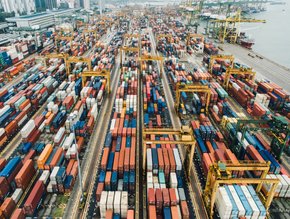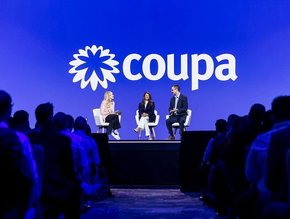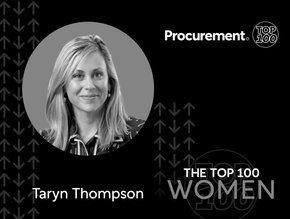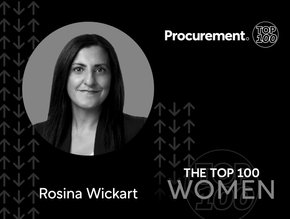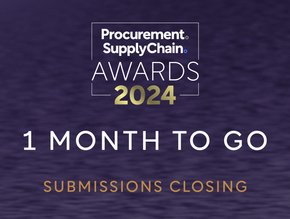EY: Staying competitive with procurement digitalisation

Stepping into the spotlight, Procurement’s value since the outbreak of COVID-19 has become clear. At the boardroom level around the world, it is being seen as a key contributor to building resilience, optimising risk, fostering innovation, and financial stewardship.
But…
With this newfound focus, it has highlighted the challenges of the function including inaccurate, incomplete, or missing data; inefficient or outdated procurement processes; lack of cross-functional integration; and loss of market share to competitors.
All of which can result in poor supplier risk management and pricing decisions; increased effort and cost across the source-to-pay (S2P) lifecycle; and a lack of stakeholder buy-in for procurement decisions.
Outlined in a report from EY Canada, the company emphasises the track record that digital enablers have at mitigating risks in procurement.
“With an increasingly competitive and unpredictable business climate, organisations need to understand current complexities in the procurement ecosystem and adopt enablers that reduce risks, unlock efficiencies and ultimately improve their bottom line,” said EY Canada.
Enhancing procurement with digital enablers
The compelling case for cloud-based S2P
With procurement on the cusp of a fast and hard to predict change, the industry is in need of an adaptive platform that can flexibly cope with the uncertainty and complexity of the function.
Couple this with the benefits of consumer-like experiences to improve requisitioner control and satisfaction, as well as the extension of buyer/supplier networks beyond procurement and the pace of innovation, cloud naturally comes to mind as the logical solution.
Applying cloud-based platforms to trading networks
By applying cloud-based platforms to trading networks, procurement teams can connect buyers and sellers, enhance supplier management, and enable more efficient spend management across purchase orders and accounts payable records.
With the use of an optimised cloud-based platform, many organisations have not only realised reductions in their indirect spend and savings due to increased spend coverage, but have also benefited from sourcing efficiency improvements, procurement cycle time improvement, reductions in processing times, and safety and regulatory compliance in procurement.
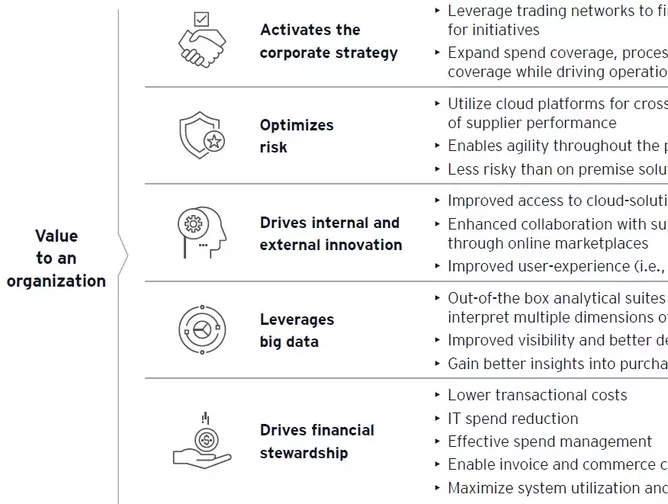
The value of intelligent automation
Intelligent automation is being used by industries to automate high-volume, complex, and/or multi-step data handling actions, as well as capturing and interpreting existing applications and triggering responses with other systems.
An example of this technology can be seen in the form of chatbots. Many industries use this type of intelligent automation to retrieve and distribute information more efficiently, as well as to improve employee experience and engagement.
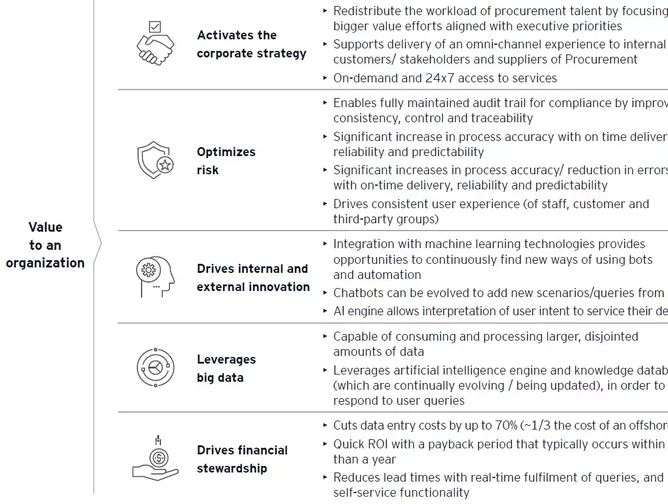
Blockchain in procurement
Blockchain - a distributed ledger that receives, validates and permanently stores transactions. Such technology is primed to help the procurement function optimise its processes.
The technology can be used to safely share information that is verified and trusted, forming a public record for all stakeholders to have access to key data. Blockchain can also be used in procurement to create smart contracts for the procure-to-pay (P2P) process. Smart contracts provide procurement with greater efficiency and agility.
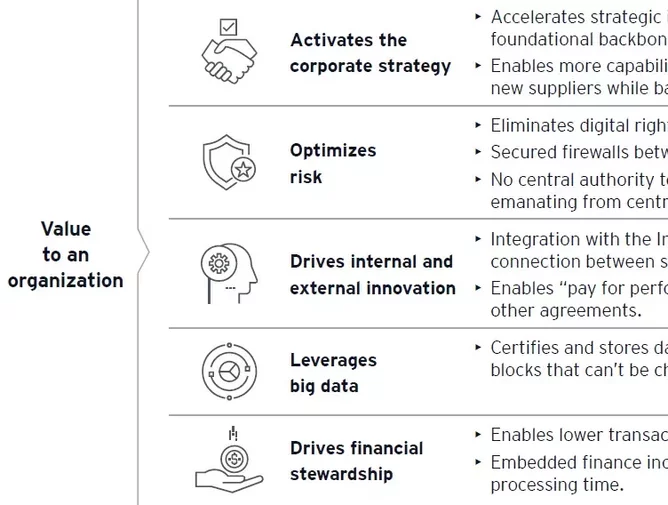
Data analytics and visualisation in procurement
By combining data analytics with a visualisation tool, procurement can automate and improve its data cleansing, transformation, and classification operations. Being able to effectively visualise this data, the function can unlock purchasing savings opportunities, compliance, a robust sourcing process, data-driven communications to stakeholders and increased negotiation power with suppliers.
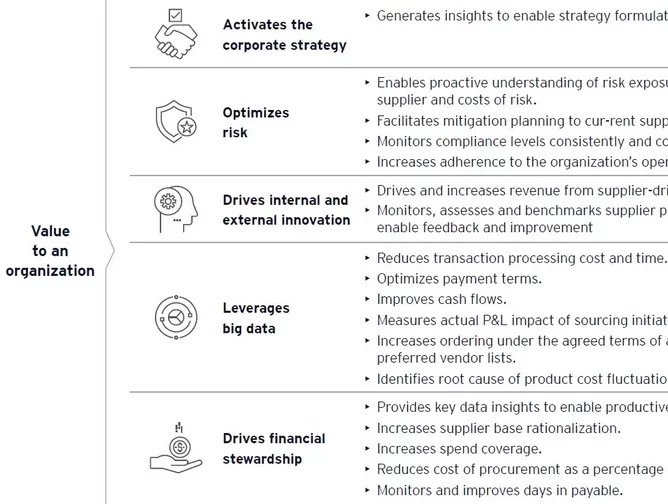
Where should procurement start in order to digitise the function?
The discussed solutions undoubtedly will help organisations to better prepare the function for today’s business climate, but it is important to assess the current functions of a given organisation before diving into implementation. “Developing a roadmap for digital enablement is key to unlocking long value-creation opportunities for organisations that wish to remain competitive in the market,” said EY Canada.
Developing a plan for procurement digitalisation
In EY Canada’s report, the company outlines a five-step plan for developing a procurement digitalisation strategy:
1. Start with a strategy review. Identify key business drivers and the impacts of digital disruption, and correspond with stakeholders.
2. Follow up with an assessment. Match trends and threats to the existing strategy, analyse customer satisfaction and complaints, assess digital enablement/maturity, and conduct a people and culture change readiness.
3. Define and quantify KPIs. Align target state with organisational units, conduct workshops, determine preferences and constraints, redesign processes and define integrations between processes.
4. Identify gaps between the current and target state. Priorities the needs for improvements, and define and develop a target state model.
5. Develop a roadmap and business case. Based on prioritised improvement areas to reach the target state, calculate the cost/benefits, conduct an ROI analysis, and develop a change management network.

